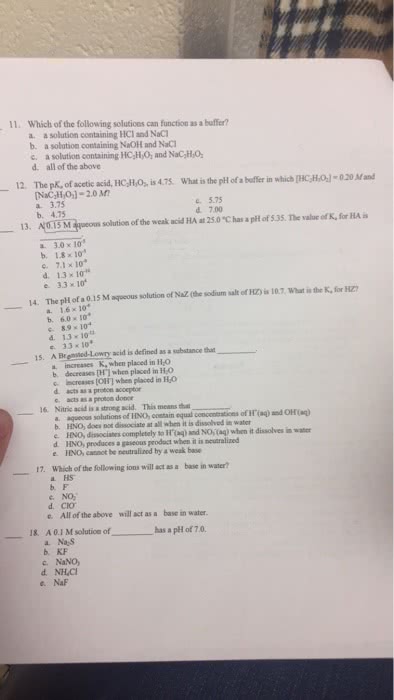CHEM1011 Lecture Notes - Lecture 4: Ideal Gas Law, Intermolecular Force, Lone Pair

CHEM1011 – Chemistry 1A – Part 2
LEC 4: Acid and Base
Theory
• Acid [H+]:
o Proton donor
o Must contain a H
o Can be positively, negatively or neutrally charged
▪ E.g. HCl, H3O+, NH4+, H2SO4, H2CO3 (carbonic acid)
• Base [OH-]:
o Proton acceptor
o Must contain a lone pair of electrons to bind to H+ ion
o Can be negatively charged or neutral
▪ E.g. Cl-, OH-, NH3
• Amphiprotic: can act as an acid or base
• Conjugate pairs:
• Strong vs weak:
o Strong acid: acid that dissociates completely into its H+ ions
▪ HCl, HBr, HI (+ O3, and O4), HNO3, H2SO4
o Weak acid: acid that only dissociates partly into its H+ ions
o Strong base: base that dissociates completely into OH-
▪ LiOH, NaOH, KOH, Ca(OH)2
o Weak base: base that only partly dissociates into OH-
• Concentration: conc. depends on how the substance has been diluted
• pH: determined by both strength and concentration
• Common acids: Sulfuric acid H2SO4, Nitric acid HNO3, Acetic acid CH3CO2H
• Common bases: Calcium carbonate CaCO3, Sodium hydroxide NaOH, Ammonia NH3
• Acid reactions:
o Neutralisation: acid + base → salt + water
o Carbonates: acid + carbonate → salt + CO2(g) + water
o Metals: acid + metal → salt + H2(g)
Calculations
• Titration:
1. Start with volume of known concentration
2. n = C x V to find moles of known solution
3. Using mole ration (from equation) find moles of unknown solution
4. C = n/V to find conc. of unknown solution
LEC 5: Gases
Theory
find more resources at oneclass.com
find more resources at oneclass.com
Document Summary
Theory: acid [h+], proton donor, must contain a h, can be positively, negatively or neutrally charged, e. g. +, h2so4, h2co3 (carbonic acid: base [oh-], proton acceptor, must contain a lone pair of electrons to bind to h+ ion, can be negatively charged or neutral, e. g. Calculations: titration, start with volume of known concentration, n = c x v to find moles of known solution, using mole ration (from equation) find moles of unknown solution, c = n/v to find conc. of unknown solution. Theory: boyle"s la(cid:449): at fixed temperature and moles, as pressure increases, volume. 1 pa = 1 n m-2, 1 bar = 1 x 105 pa. P1v1 (initial) = p2v2 (final: charles" la(cid:449): at fixed pressure and moles, as temperature increase, volume, a(cid:448)ogadro"s la(cid:449): at fixed temperature and pressure, as volume increases, moles decreases. Pressure = pascal (pa: gas pressure and measurement: pressure = (cid:2916)orc(cid:2915) (cid:4666)n(cid:4667) ar(cid:2915)a (cid:4666)m2(cid:4667)


